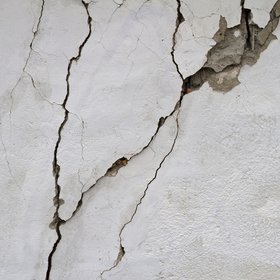How buildings can withstand earthquakes
Interview with TU Hamburg expert Rombach
10.02.2023

The 7.5-magnitude earthquake in Turkey and Syria has left thousands dead, and people are still being rescued from the rubble. Photographs and video footage show how entire building complexes collapsed during the quake. How could the massive building collapses have happened and what does earthquake-resistant construction look like? Günter Rombach, Professor and Head of the Institute for Solid Construction at the Technical University of Hamburg, talks about earthquake protection in this interview.
How do you ensure that buildings do not collapse during earthquakes?
To make a building earthquake-proof, complex static and dynamic calculations are needed before construction. The location of the building area determines the earthquake strength that must be calculated. This results in the loads that a building must withstand in extreme cases. In addition, structural reinforcements are prescribed. The challenge in an earthquake is the large horizontal forces to which the building is subjected. In order to dissipate the very large energy of an earthquake, the structural members of a building must have a certain deformation capacity. So in an earthquake, a safe building will resonate.
What is special about these calculations?
It is primarily a matter of dynamic calculations, which are also necessary in a simple form for the construction of grandstands or bridges. This is relatively unusual in civil engineering, since buildings normally tend to carry static loads. However, since an earthquake is highly dynamic and very large loads are generated, it is almost impossible to construct buildings in such a way that they do not suffer any damage at all. This is comparable to fire protection.
What do you mean?
The primary goal of structural fire protection is not to be able to continue using the building as normally as possible after a fire. The priority is to get people to safety alive in the event of an emergency and to enable the fire department to fight the fire. It is the same with earthquake protection: the building should not be built so that it looks 1A afterwards, but so that it does not collapse in order to save human lives. Normally, it is then no longer usable after an extreme earthquake, for example in the case of reinforced concrete structures due to wide cracks or large deformations.
Which material is particularly suitable for earthquake-resistant buildings?
This question is not easy to answer. Ultimately, it depends on the construction. High-rise buildings are largely made of concrete and steel. This building material can carry large loads. Steel has a soft behavior, yields to vibrations and absorbs compressive and tensile forces well. Wood is also theoretically suitable. It can yield to earthquake waves because it is elastic. However, high-rise buildings can hardly be built from wood.
How could the massive building collapses in the earthquake zones in southern Turkey and northern Syria have happened?
Looking at the videos from the affected areas, the suspicion is that the collapsed buildings were not designed for such a strong earthquake. Buildings have collapsed practically vertically, which shows that safety standards were very likely not met.
What is the earthquake risk in Germany?
I would describe it as a moderate risk. There have been strong earthquakes in Germany, especially in the Swabian Alb, in the southern Rhine rift valley and in the area around Gera. An earthquake in Hamburg is very unlikely; here, we are dealing more with the natural phenomenon of flooding.
TUHH - Public Relations Office







